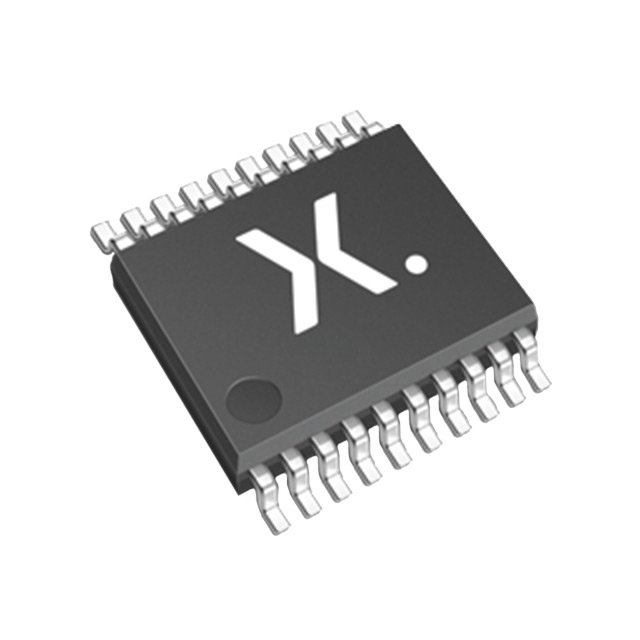Xem thông số kỹ thuật để biết chi tiết sản phẩm.

74AHC245PW-Q100J
Product Overview
Category
The 74AHC245PW-Q100J belongs to the category of integrated circuits (ICs).
Use
This IC is commonly used for level shifting and signal buffering in various electronic applications.
Characteristics
- High-speed CMOS technology
- Wide voltage range: 2 V to 5.5 V
- 8-bit bidirectional voltage-level translator
- Non-inverting outputs
- Schmitt-trigger action on all inputs
- Low power consumption
- High noise immunity
- ESD protection: HBM JESD22-A114E (2000 V), MM JESD22-A115-A (200 V)
Package
The 74AHC245PW-Q100J is available in a TSSOP package.
Essence
This IC serves as a bidirectional voltage-level translator, allowing seamless communication between devices operating at different voltage levels.
Packaging/Quantity
The 74AHC245PW-Q100J is typically packaged in reels, with 2500 units per reel.
Specifications
- Supply voltage range: 2 V to 5.5 V
- Input/output voltage range: GND to VCC
- Input/output capacitance: 4 pF
- Operating temperature range: -40°C to +125°C
- Output drive capability: ±24 mA
Detailed Pin Configuration
The 74AHC245PW-Q100J has a total of 20 pins, which are assigned specific functions as follows:
- DIR (Direction Control)
- OE (Output Enable)
- A1 (Input/Output)
- B1 (Input/Output)
- A2 (Input/Output)
- B2 (Input/Output)
- A3 (Input/Output)
- B3 (Input/Output)
- A4 (Input/Output)
- B4 (Input/Output)
- GND (Ground)
- B5 (Input/Output)
- A5 (Input/Output)
- B6 (Input/Output)
- A6 (Input/Output)
- B7 (Input/Output)
- A7 (Input/Output)
- B8 (Input/Output)
- A8 (Input/Output)
- VCC (Supply Voltage)
Functional Features
- Bidirectional voltage-level translation
- Non-inverting outputs ensure signal integrity
- Schmitt-trigger action on all inputs for noise immunity
- Direction control pin allows switching between input and output modes
- Output enable pin enables/disables the outputs
Advantages and Disadvantages
Advantages
- High-speed operation
- Wide voltage range compatibility
- Low power consumption
- ESD protection for enhanced reliability
- Compact TSSOP package for space-constrained applications
Disadvantages
- Limited number of bidirectional channels (8 in total)
- Not suitable for high-current applications
Working Principles
The 74AHC245PW-Q100J operates by receiving input signals from one voltage domain and translating them to another voltage domain, ensuring seamless communication between devices operating at different voltage levels. The direction control pin determines the direction of data flow, while the output enable pin enables or disables the outputs.
Detailed Application Field Plans
The 74AHC245PW-Q100J finds applications in various fields, including:
- Industrial automation: Level shifting between different control systems.
- Consumer electronics: Interface conversion between devices operating at different voltage levels.
- Automotive electronics: Signal buffering and level shifting in automotive communication systems.
- Telecommunications: Voltage-level translation in networking equipment.
Detailed and Complete Alternative Models
- SN74LVC245A: Similar bidirectional voltage-level translator with 3-state outputs.
- CD4050B: Hex non-inverting buffer with voltage-level translation capability.
- TXS0108EPWR: 8-bit bidirectional voltage-level translator with automatic direction sensing.
These alternative models offer similar functionality and can be considered as substitutes for the 74AHC245PW-Q100J in different applications.
Word count: 560 words
Liệt kê 10 câu hỏi và câu trả lời thường gặp liên quan đến ứng dụng 74AHC245PW-Q100J trong giải pháp kỹ thuật
Sure! Here are 10 common questions and answers related to the application of 74AHC245PW-Q100J in technical solutions:
Q: What is the function of the 74AHC245PW-Q100J? A: The 74AHC245PW-Q100J is an octal bus transceiver that facilitates bidirectional transfer of data between two buses.
Q: What is the operating voltage range for the 74AHC245PW-Q100J? A: The operating voltage range for this IC is typically between 2V and 5.5V.
Q: Can the 74AHC245PW-Q100J handle level shifting between different voltage domains? A: Yes, it can be used for level shifting as long as the voltage levels are within its specified operating range.
Q: How many data lines can the 74AHC245PW-Q100J handle? A: This IC can handle up to 8 bidirectional data lines.
Q: What is the maximum data transfer rate supported by the 74AHC245PW-Q100J? A: The maximum data transfer rate is typically around 120 MHz.
Q: Does the 74AHC245PW-Q100J have any built-in ESD protection? A: Yes, it has built-in ESD protection on all inputs and outputs.
Q: Can the 74AHC245PW-Q100J be used in automotive applications? A: Yes, it is specifically designed for automotive applications and meets the AEC-Q100 standard.
Q: What is the power supply current consumption of the 74AHC245PW-Q100J? A: The power supply current consumption is typically very low, making it suitable for low-power applications.
Q: Can the 74AHC245PW-Q100J be used in both parallel and serial communication systems? A: Yes, it can be used in both parallel and serial communication systems depending on the application requirements.
Q: Does the 74AHC245PW-Q100J have any special features for bus arbitration or control? A: No, it is a simple bidirectional transceiver without any built-in bus arbitration or control features.

